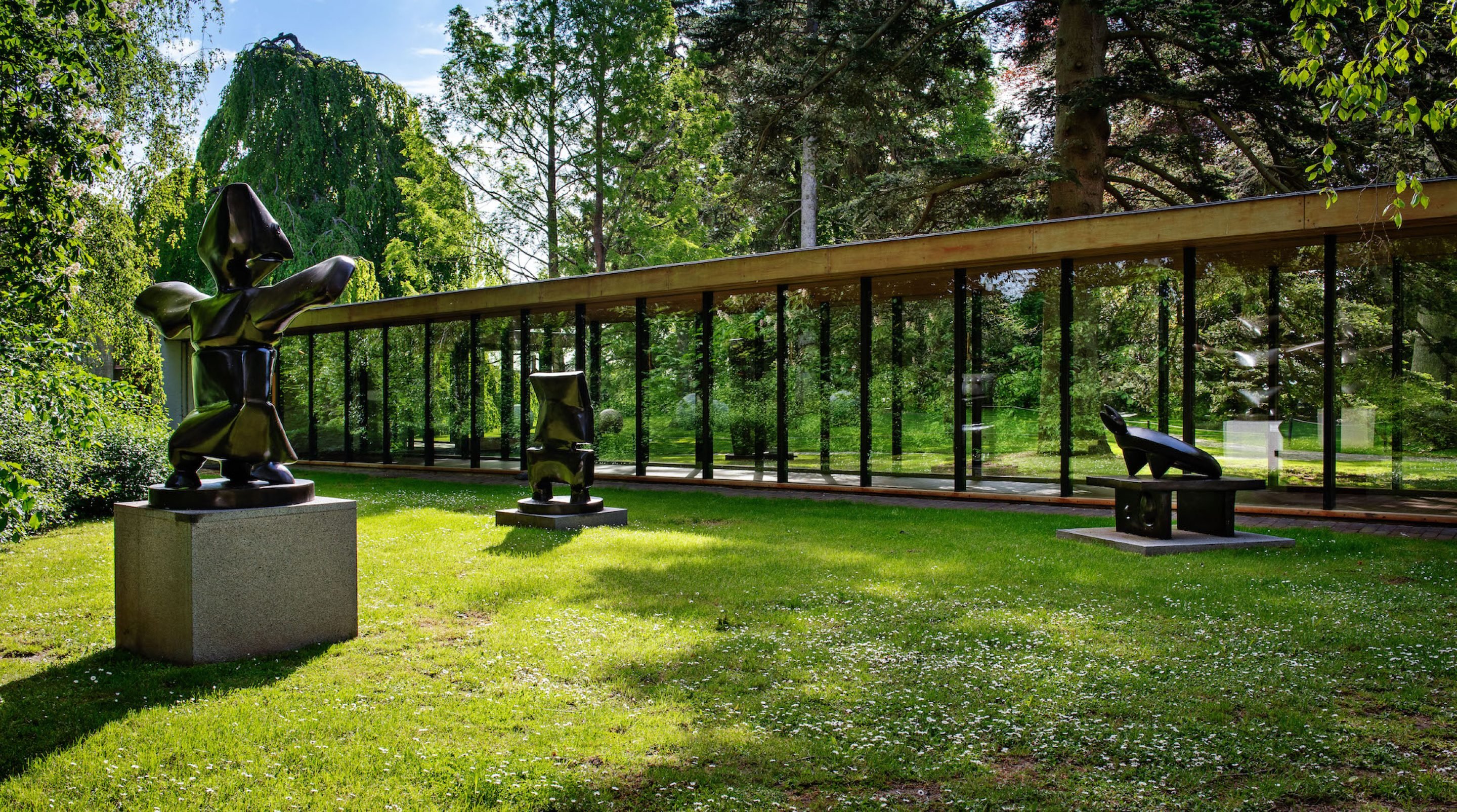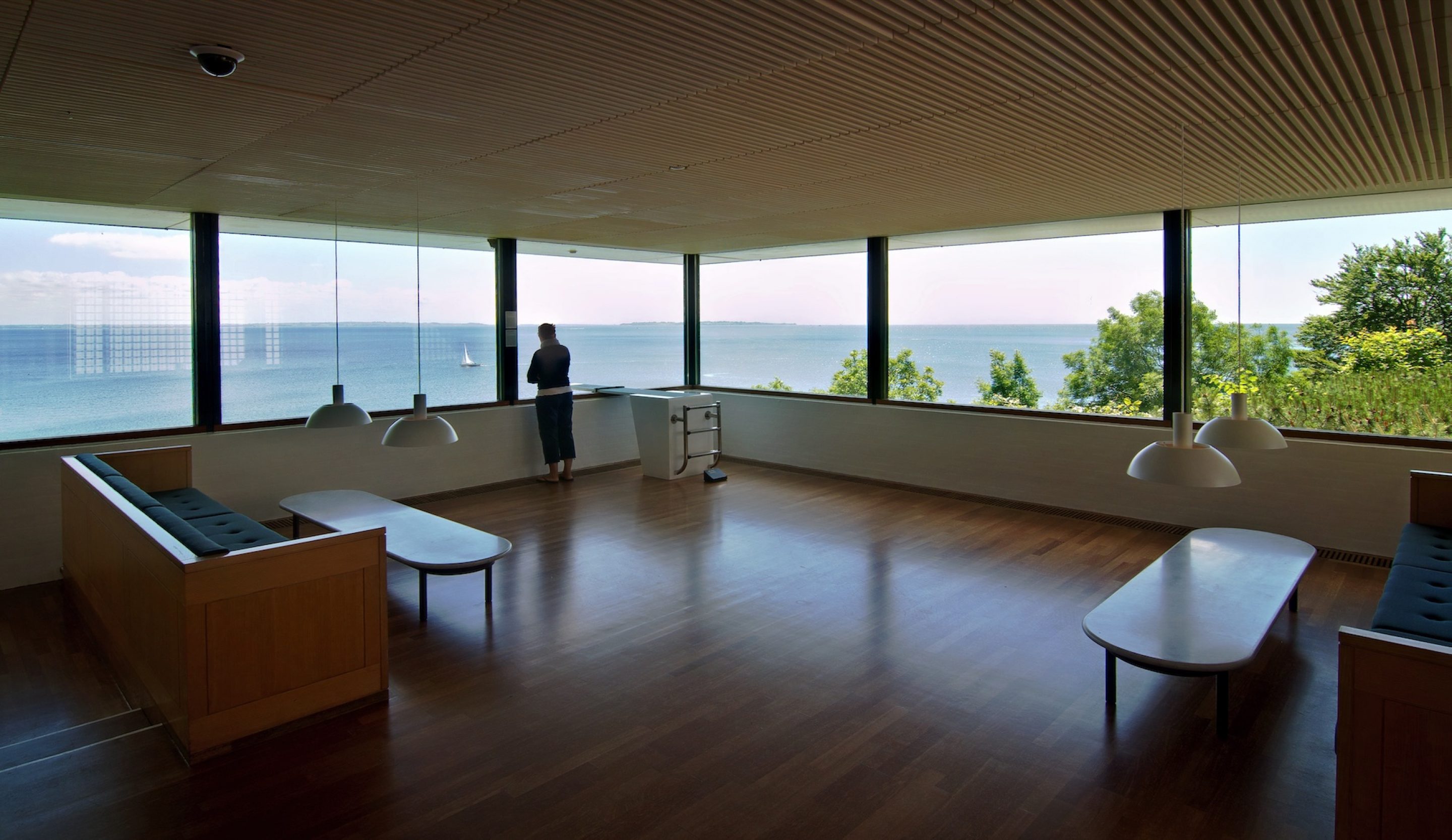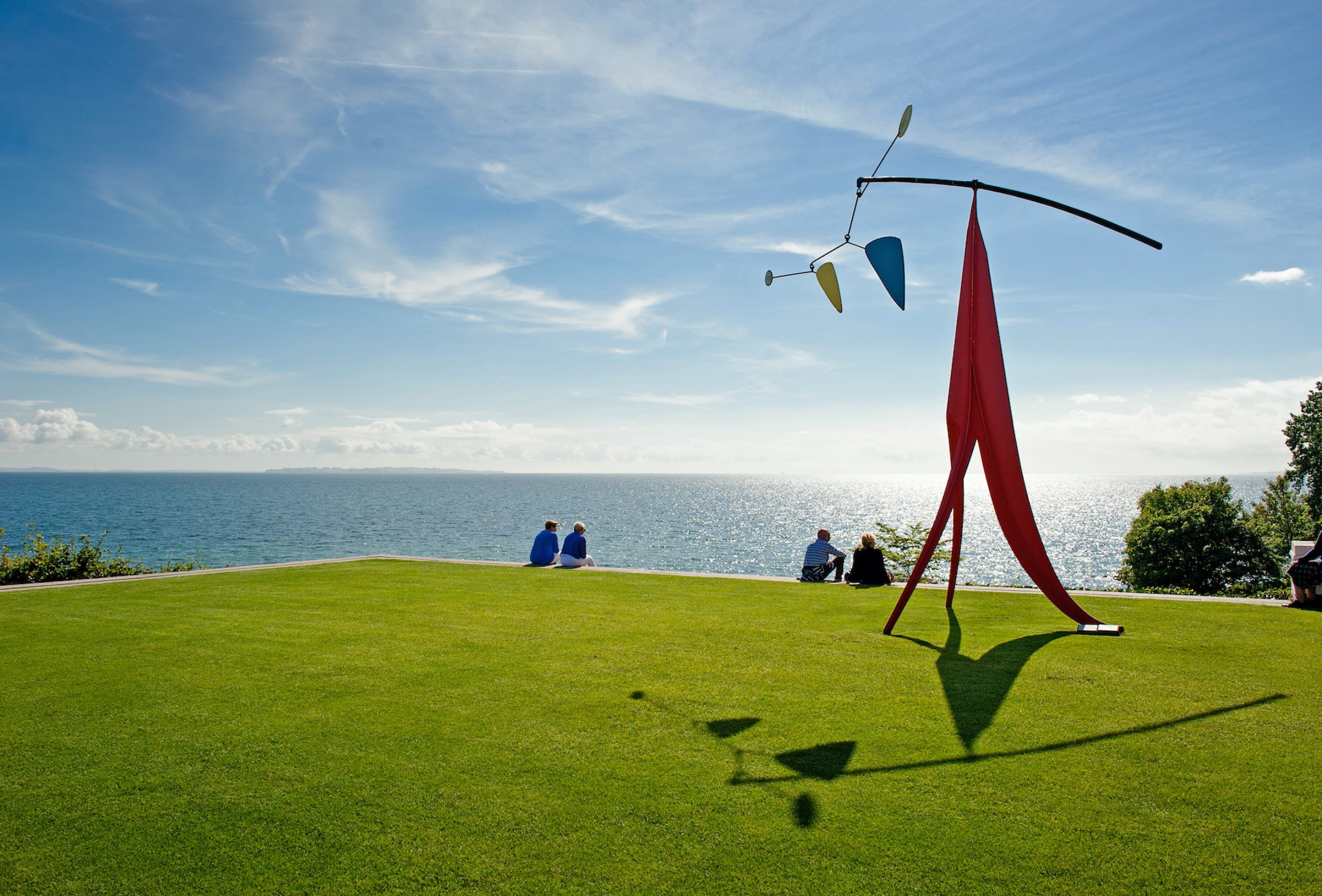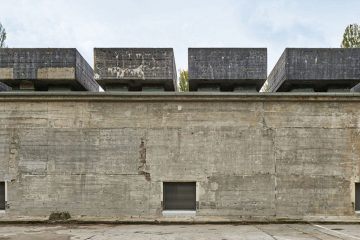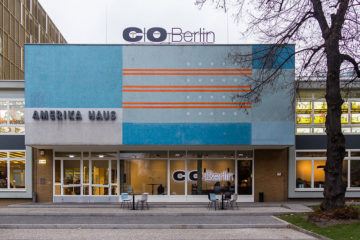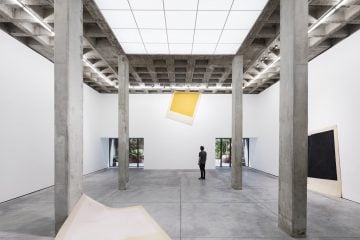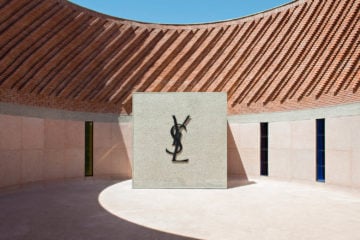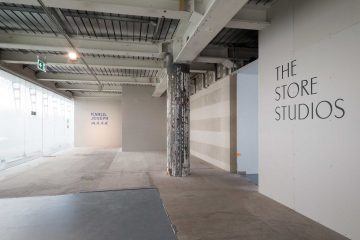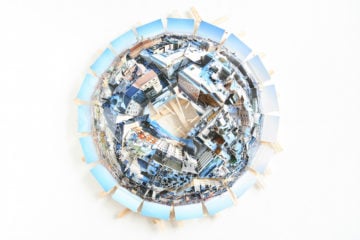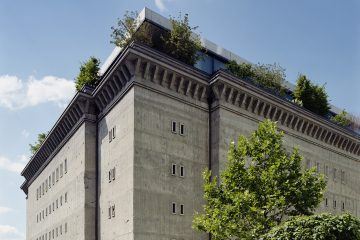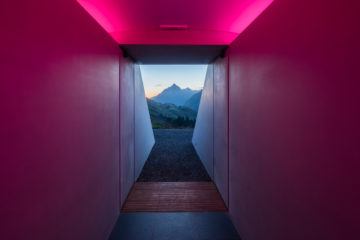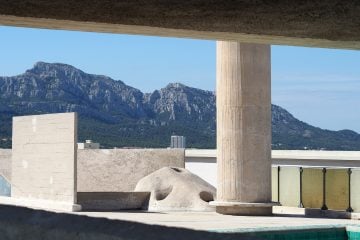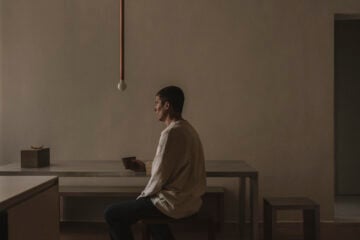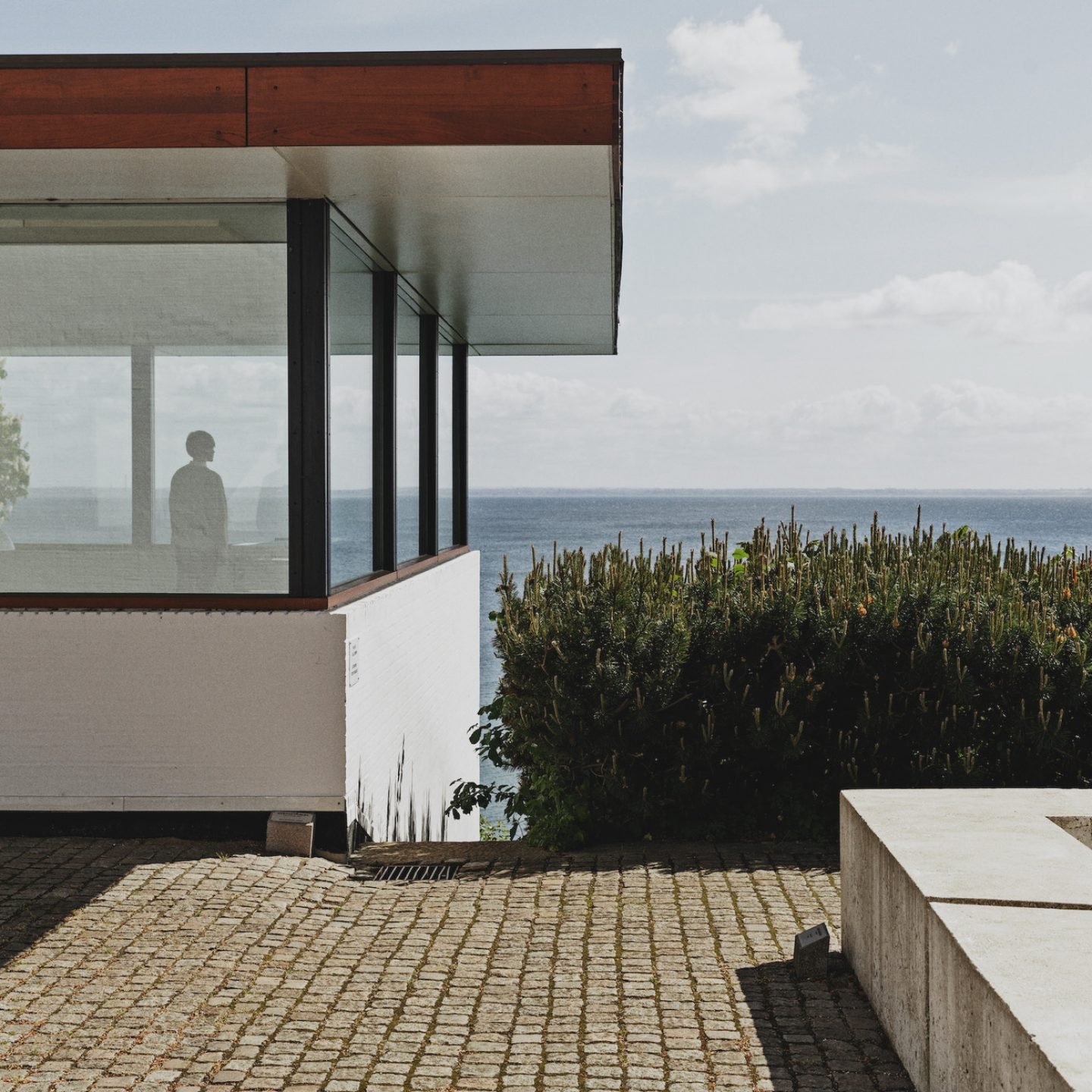
Louisiana Museum of Modern Art · Copenhagen, Denmark
- Name
- Louisiana Museum of Modern Art
- Words
- Steph Wade
Half an hour north of Copenhagen in the sleepy coastal village of Humlebæk, lies one of the world’s most respected and sensational art experiences: the Louisiana Museum of Modern Art, a groundbreaking institution set inside a major work of Danish modernist architecture.
What makes the Louisiana so unique however is not only its world-class art collection, but the unassuming setting in which the works are presented. An 1870s villa, surrounded by three modernist pavilions, is connected by glass-walled passages set amidst a sprawling sculpture park at the edge of the Øresund, called the Sound in English; a strait which looks out to southern Sweden. It is precisely this combination of architecture and natural setting that strikes the eye on the first visit. In the mid-50s, when the museum’s founder Knud W. Jensen asked the architects Jørgen Bo and Wilhelm Wohlert to build a museum based on the old villa, their foundational plan was to link the building with its sea surroundings. For this reason, it is such a memorable gallery, blending indoor and outdoor together so seamlessly, providing an all-encompassing scenic experience for regulars and tourists alike.
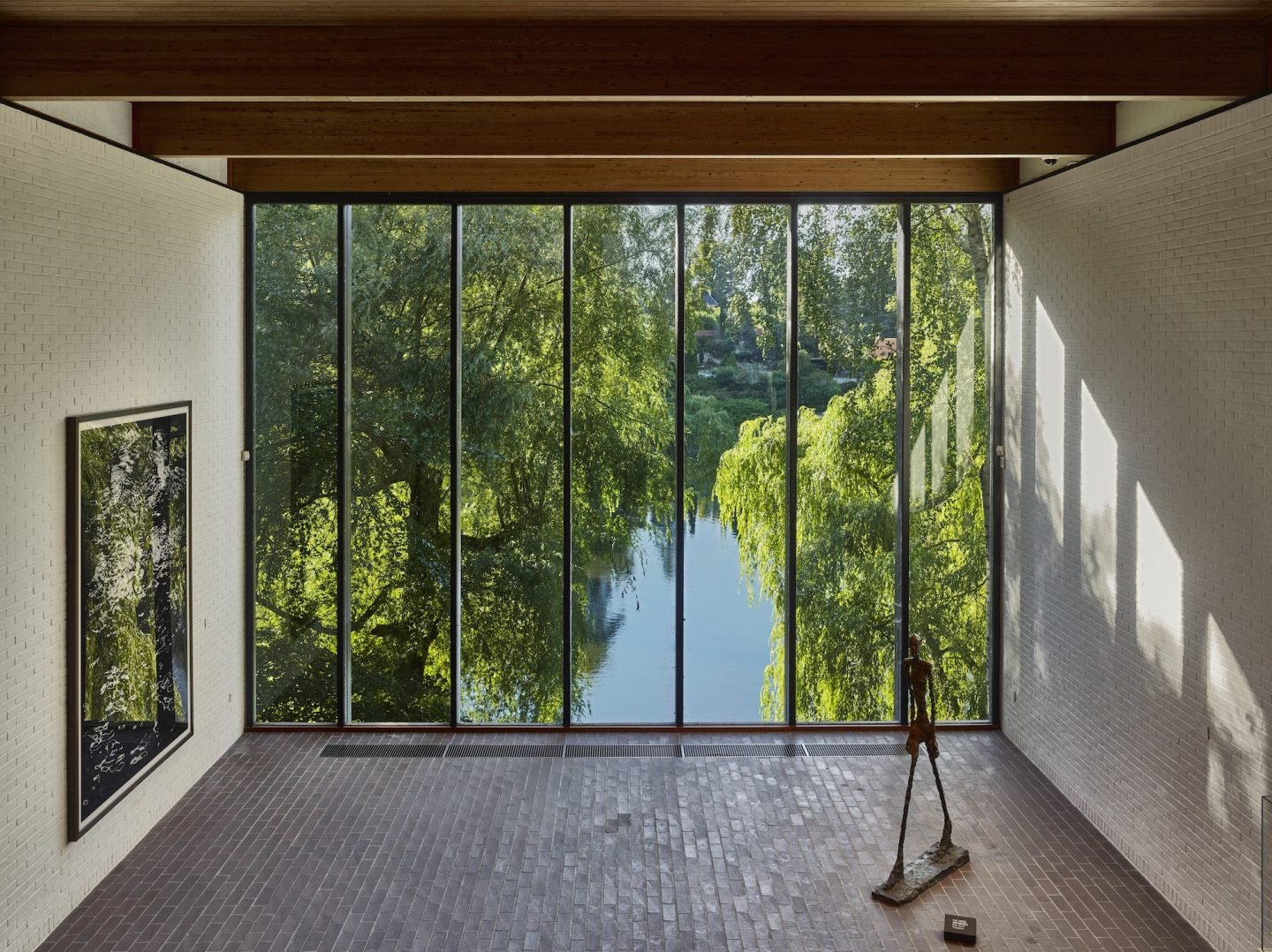
The North Wing - two-storey exhibition space with sculptures by Alberto Giacometti. Image © Jeremy Jachym
Louisiana has visual references to traditional Japanese architecture, which the architects succeeded in transmitting elegantly into the Danish setting.
The two architects took their inspiration from both sides of the North Pacific Ocean. Wohlert had studied at the University of California at Berkeley, where he became intimately familiar with the famed wooden houses surrounding the San Francisco Bay Area. In addition, Louisiana has clear visual references to the traditional simplicity of Japanese architecture, which the pair succeeded in transmitting elegantly into the Danish setting. Characterized by long whitewashed walls, exposed structures, laminated wooden ceilings, deep-red tiled floors, and large glass panels, each element contributes to the museum’s unique architectural lightness.
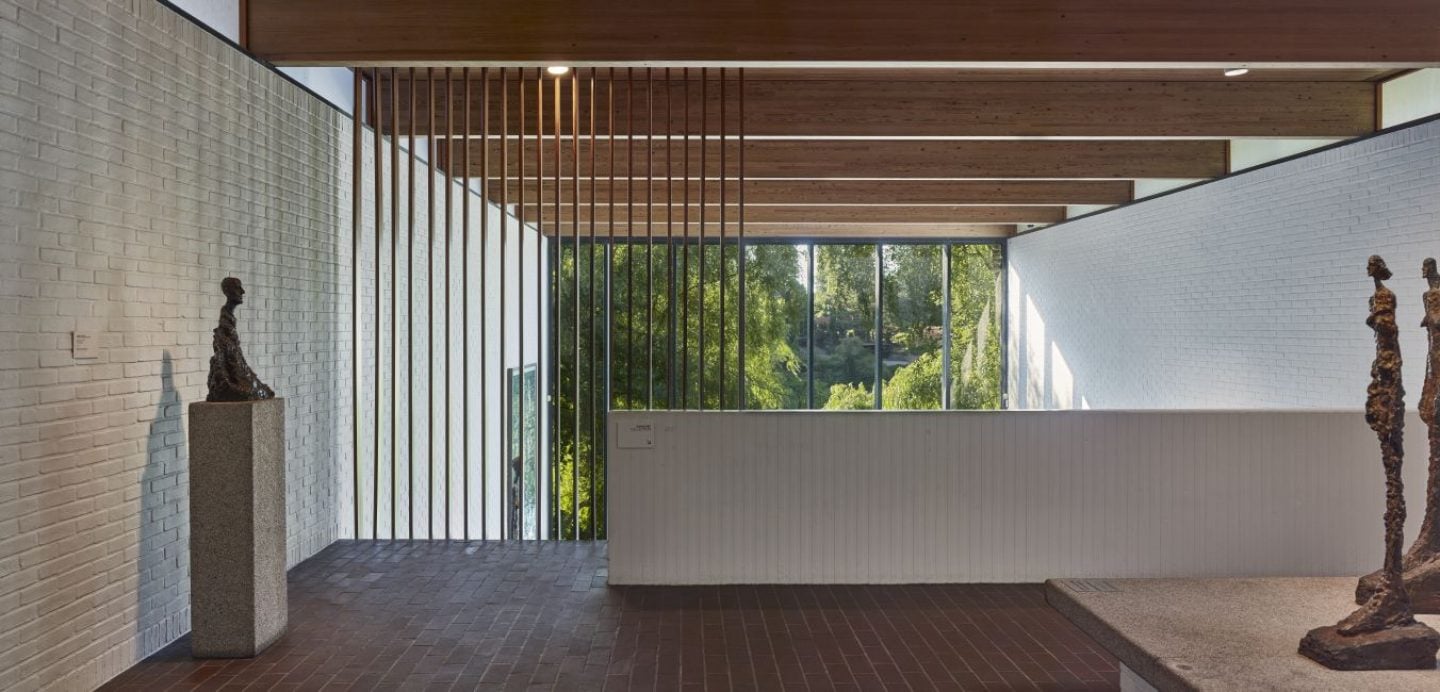
North Wing - two-storey exhibition space with sculptures by Alberto Giacometti. Photo: Kim Hansen. Credit: Louisiana Museum of Modern Art.
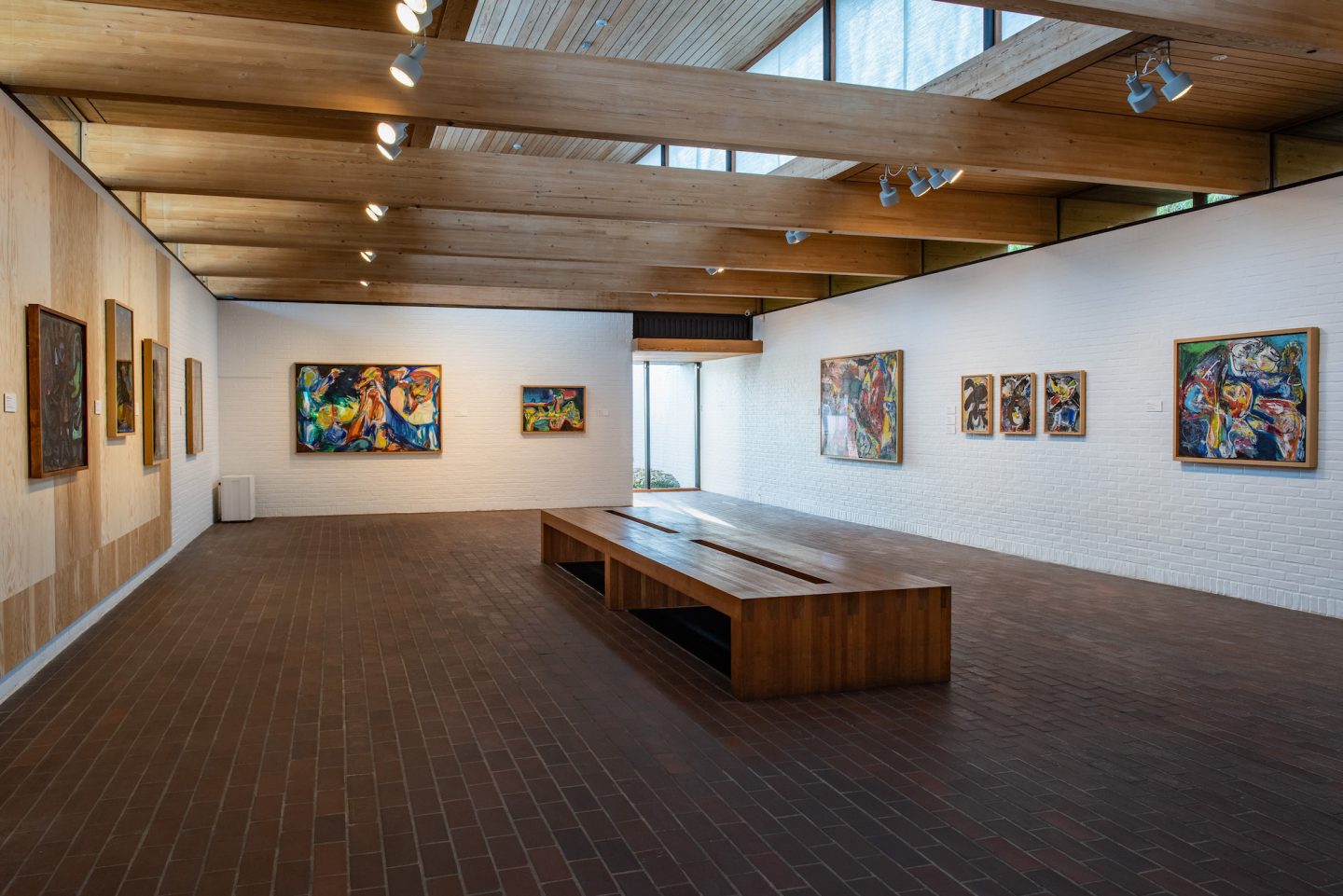
In 2005, French starchitect Jean Nouvel collaborated with the museum on the exhibition ‘Jean Nouvel – Louisiana Manifesto’. Sharing his thoughts and passion about the place, Nouvel remarked that when you walk around the museum, the landscape belongs to the museum, and vice versa. “This is not a traditional museum,” he said. “Everything belongs to everything, and this does not exist anywhere else. All these elements form a natural world.”
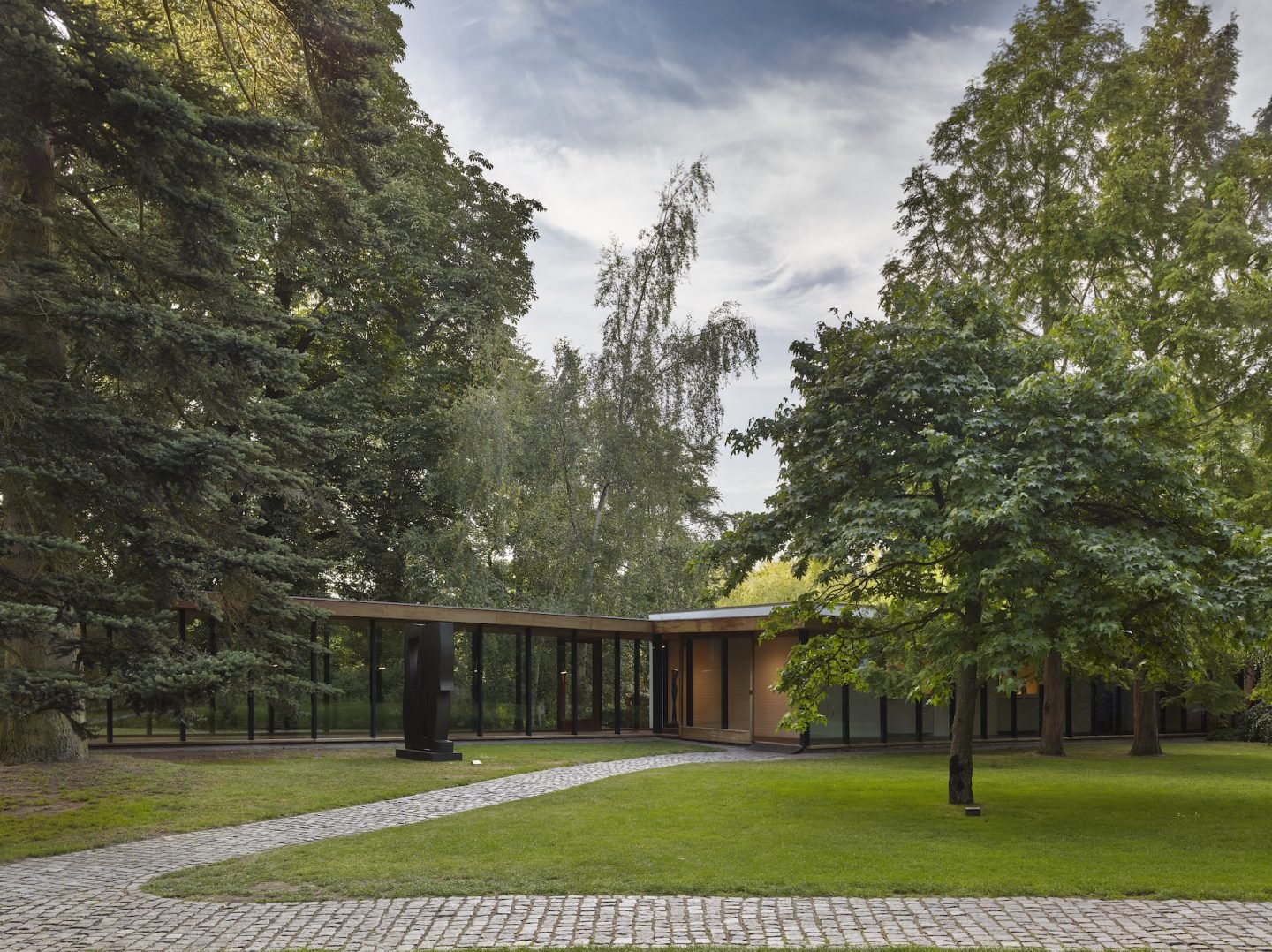
The North Wing as seen from the Sculpture Park. Image © Jeremy Jachym
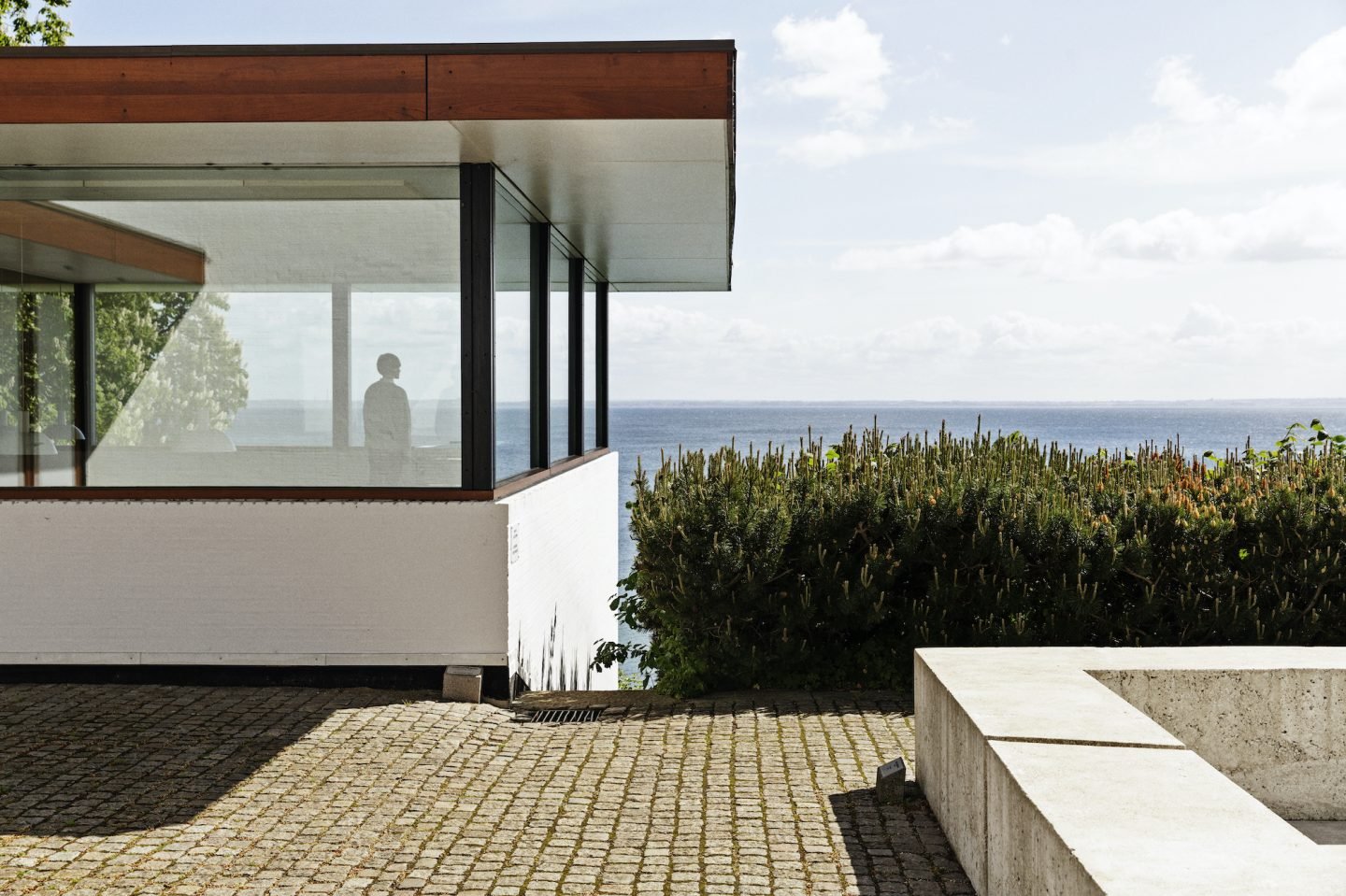
View room in the South Wing, exterior. Photo: Ulrik Jantzen. Credit: Louisiana Museum of Modern Art
Upon entry through the courtyard, visitors walk through the country villa, and can veer off in different directions in a choose-your-own-adventure style experience. Several glass corridors connect to the three pavilions and the villa, which together constitute the North Wing—including the Giacometti Hall, famous for its soaring high exhibition room with a floor-to-ceiling glass wall overlooking a verdant lake. In it, statues of Alberto Giacometti (1901-1966) are displayed, one of the most influential artists of the last century who lived between Italy, France, and Switzerland. As the Louisiana grew in popularity with Danes and international visitors, over the next ten to fifteen years a West Wing and Concert Hall were built to accommodate more art and music.
In 1982, a South Wing was added to its offerings, which currently showcases Berlin studio Elmgreen & Dragset’s iconic ‘Powerless Structures, Fig. 11’; the illusory half inside-half outside diving board wedged between a glass window. By 1991, an East Wing was constructed, connecting each of the museum’s areas in a roughly circular formation. The element collecting all of these areas together is the Sculpture Park, an essential part of the Louisiana experience year-round. “This is where you meet panoramic views of the Sound and can really see how the buildings blend into the landscape,” explains a statement from the museum. 45 works by artists including Alexander Calder, Alicja Kwade, and Henry Moore are remarkable and easily distinguished, where others are almost hidden, or blend into the surroundings in a mysterious but playful way.
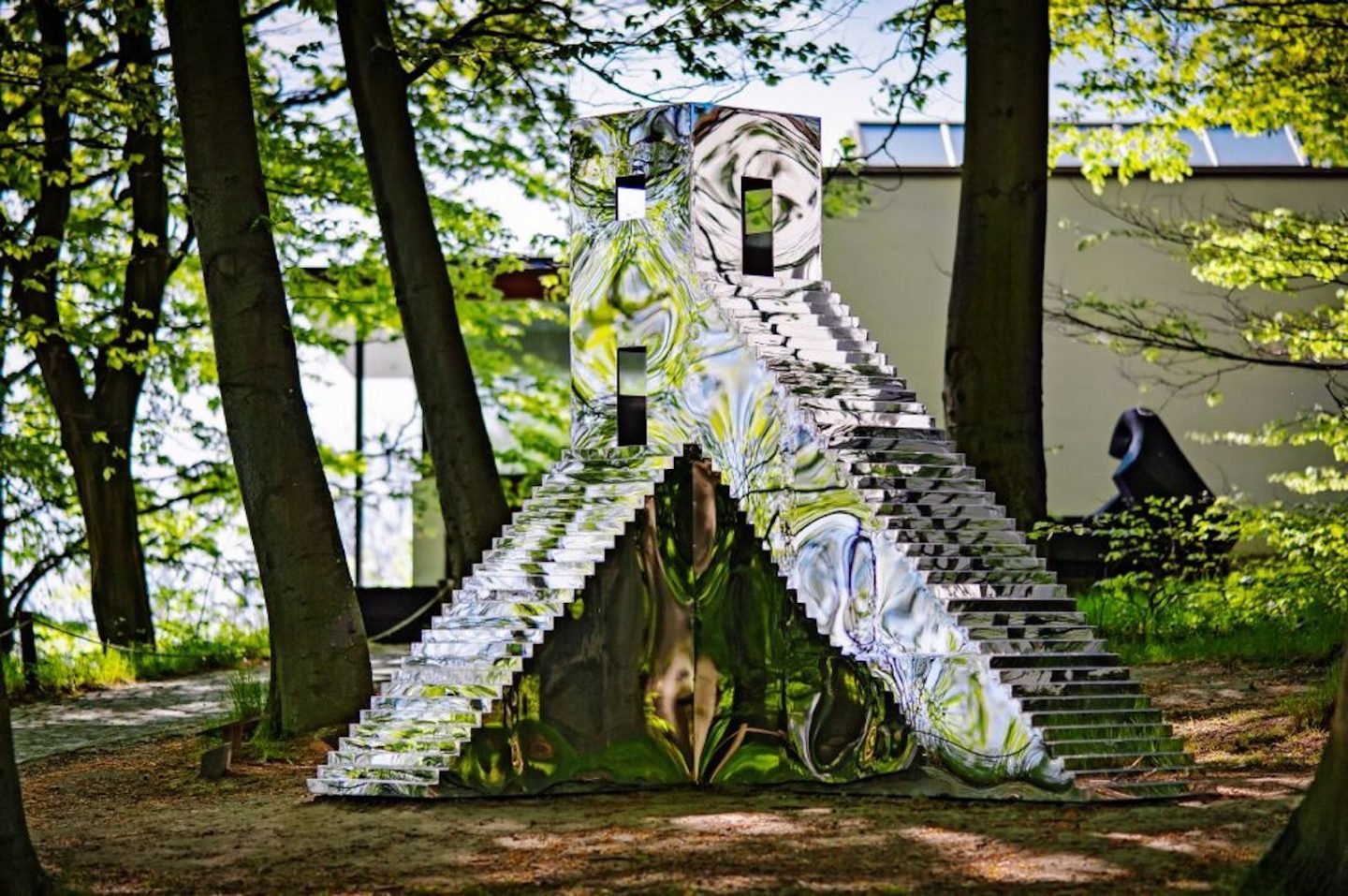
Skulpturgården. Photo: Kim Hansen. Credit: Louisiana Museum of Modern Art
This was because Jensen had the desire for his art collection to have a wide-reaching audience, and that it should be accessible and fun for the many (and not just for the oftentimes esoteric art crowds). “From the beginning, it was Jensen’s vision to create a museum with soul, where the public could encounter artwork—not as something pretentious, but rather something that spoke directly to the viewer,” explains the museum.
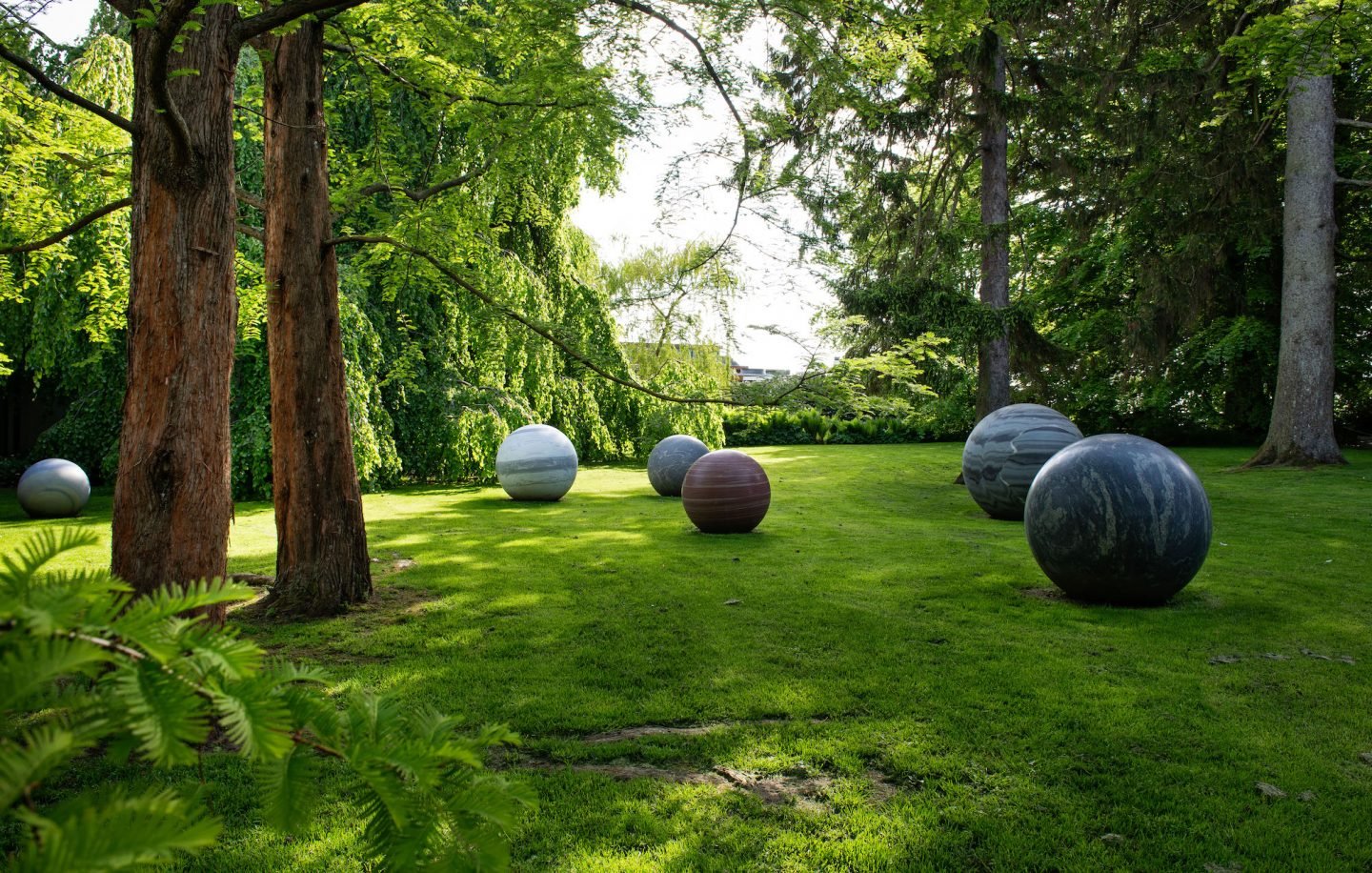
Upper lawn in the Sculpture Park. Alicja Kwade, Pars Pro Toto, 2018. Image © Kim Hansen
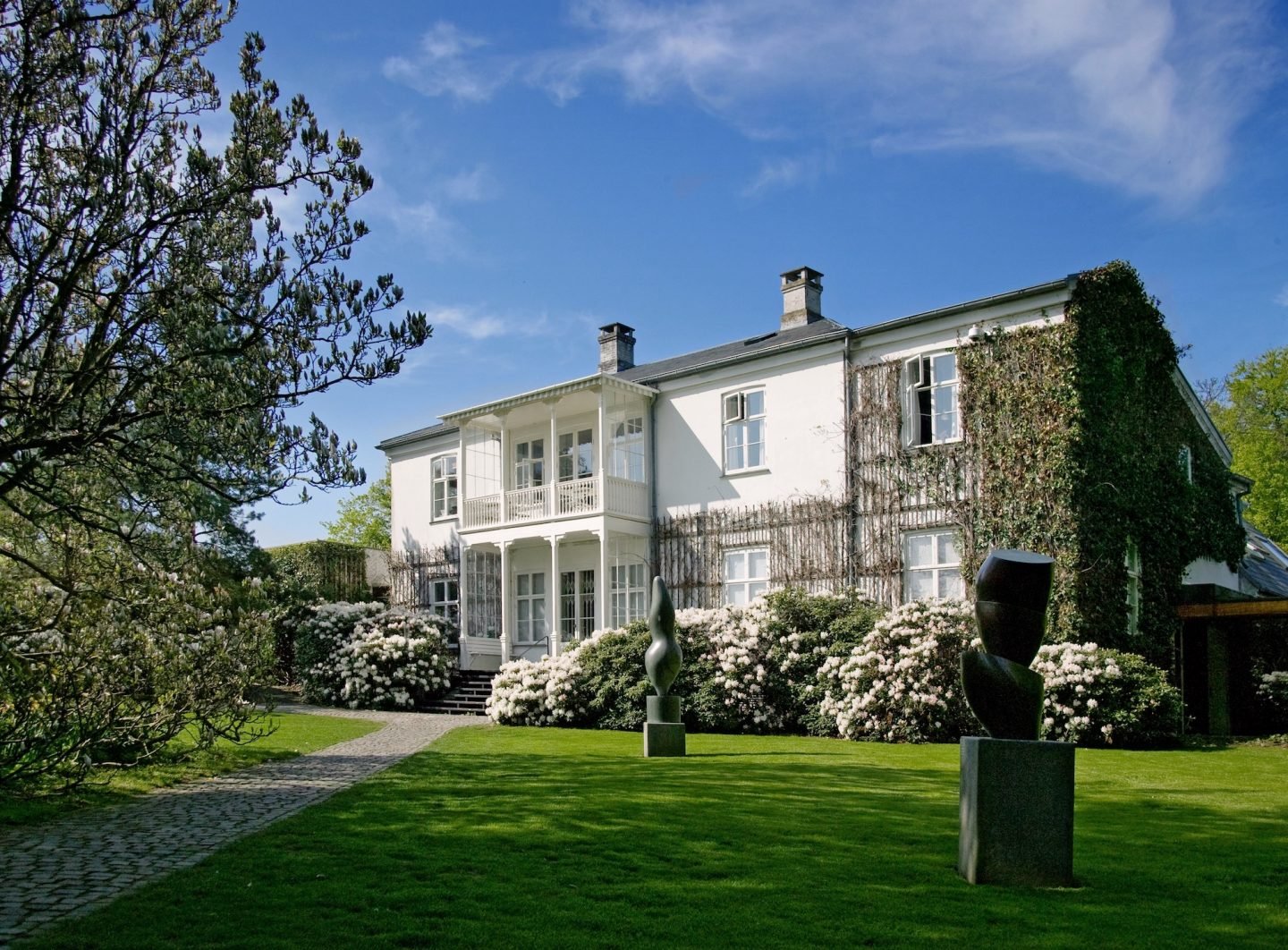
The original villa, seen from the Sculpture Park. Photo: Kim Hansen. Credit: Louisiana Museum of Modern Art
Another element connecting the museum together cohesively is its interior furnishings. To ensure that all parts of the Louisiana would unite in a collectively understated manner, the architects designed a series of furniture items, objects, and accessories, most notable of which is the Louisiana Chair, designed by Wohlert in March 1957 ahead of the concerts that were scheduled for the new hall. Constructed from black-painted beechwood, with a curved backrest and a circular seat covered in blue-green vinyl, the chair is a design classic: functional, perfectly proportioned, and comfortable. When stacked, the chairs curve around one another in a sculptural manner, rotating slightly by inserting one of the back legs between the legs of the chair below. Originally made by P Jeppesens Møbelfabrik, the chair has been relaunched with a black lacquered ash frame and gray leather seat by Shanghai-based furniture brand Stellar Works; now dotted around the cafe and bringing the space back towards Wohlert’s vision.
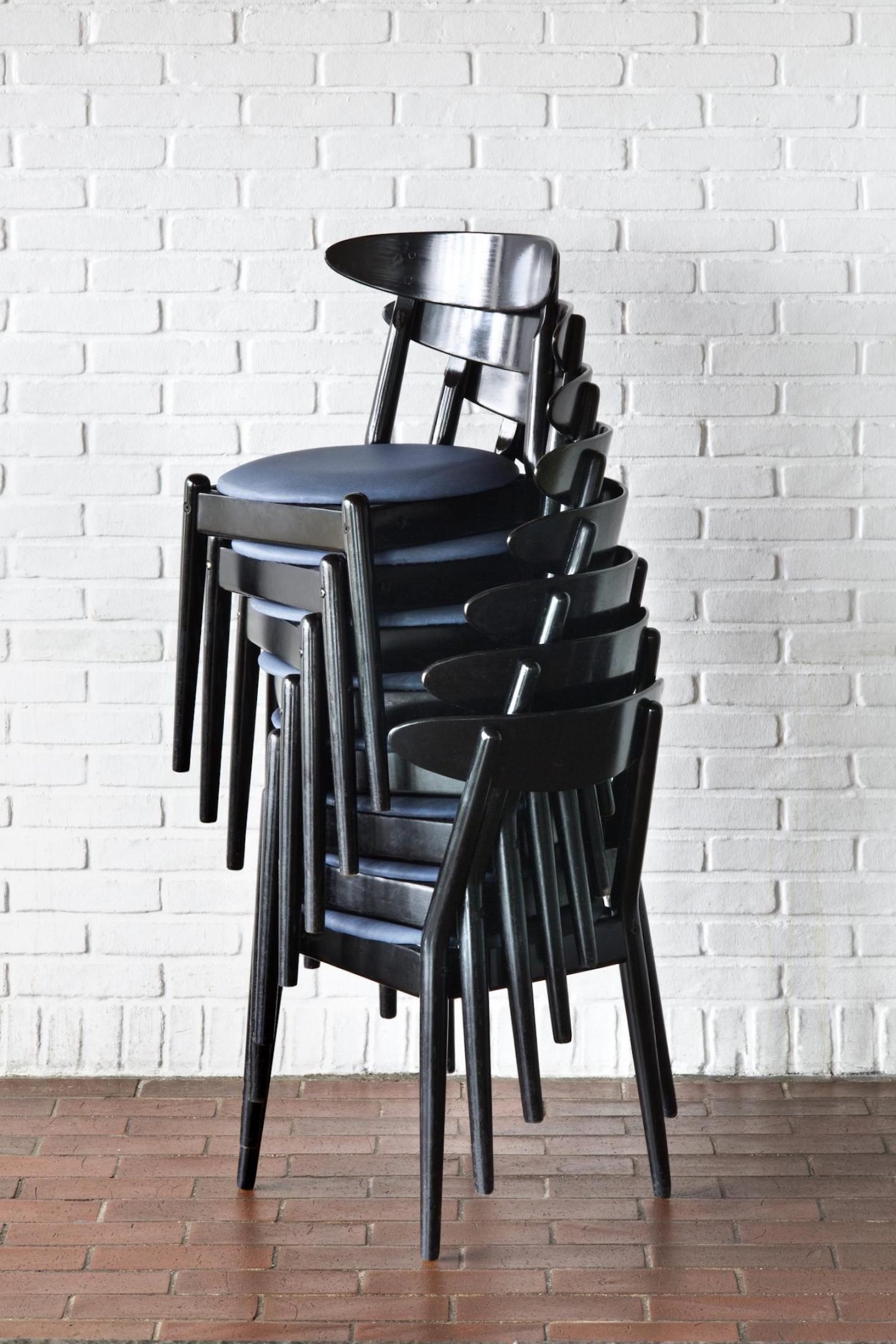
Image © Jens Frederiksen
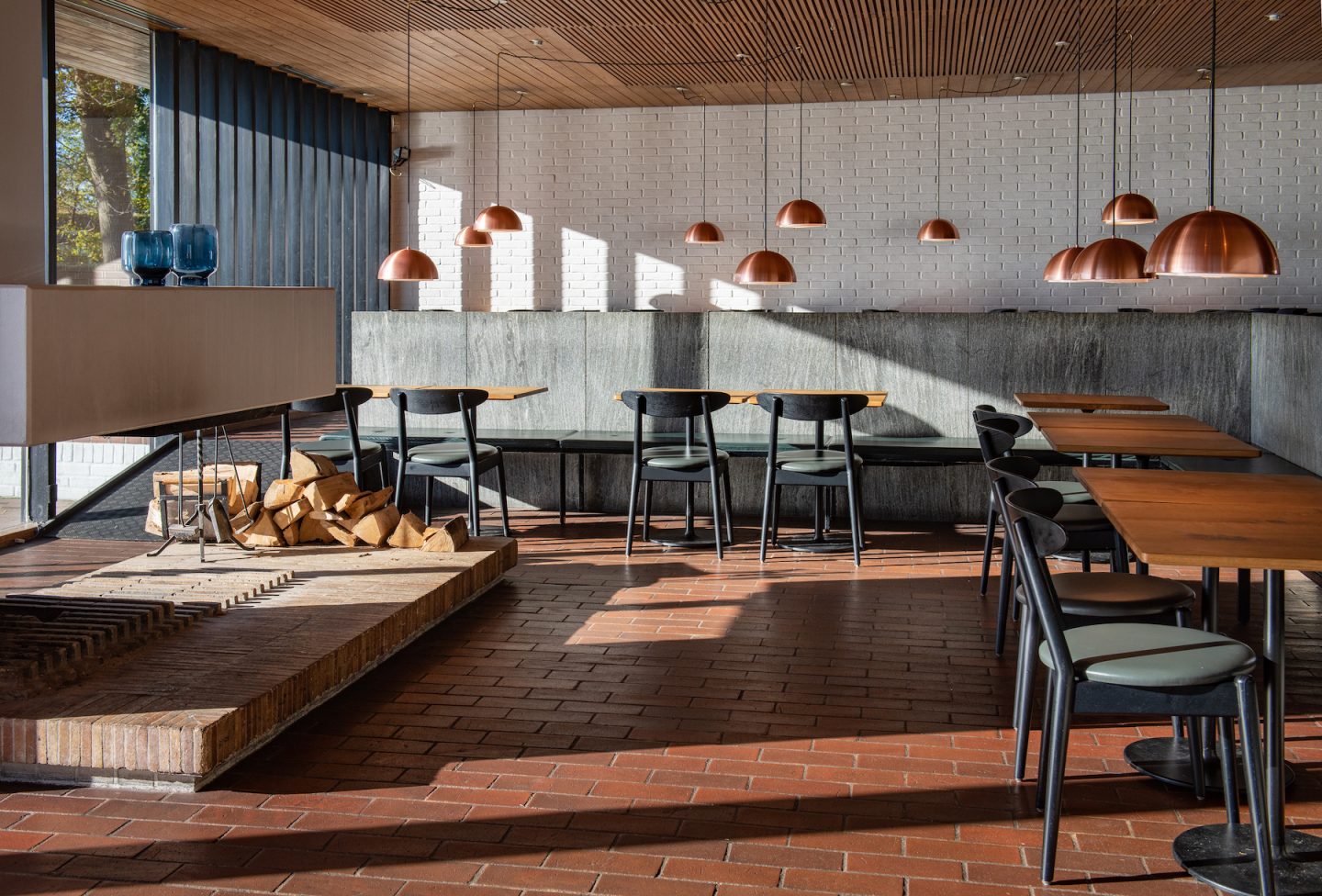
Louisiana Cafe in the North Wing. Image © Louisiana Museum of Modern Art
At present, over 4000 works by some of the world’s most revered artists grace the Louisiana’s walls from almost every genre, but with an emphasis on painting and sculpture. This includes masterpieces by Pablo Picasso, Yves Klein, Andy Warhol, Roy Lichenstein, Yayoi Kusama, and Donald Judd, among many others. One of the most well-received pieces in the entire museum is legendary Japanese artist Yayoi Kusama’s installation ‘Gleaming Lights of the Souls’, also known as the infinity mirror room. One enters a small four-meter-squared room, entirely covered with mirrors from the floor to the ceiling, with hundreds of small colored lamps changing in tone and intensity. The floor acts as a reflecting pool, and you stand in the middle of the water on a platform. The lamps morph from one color to another, in a way that moves the viewer in sync with their shifting rhythms and pulses, to aid us in becoming one with the universe of the installation.
With the creation of Kusama’s absorbing works, we are privy to glimpses of her incredible vision
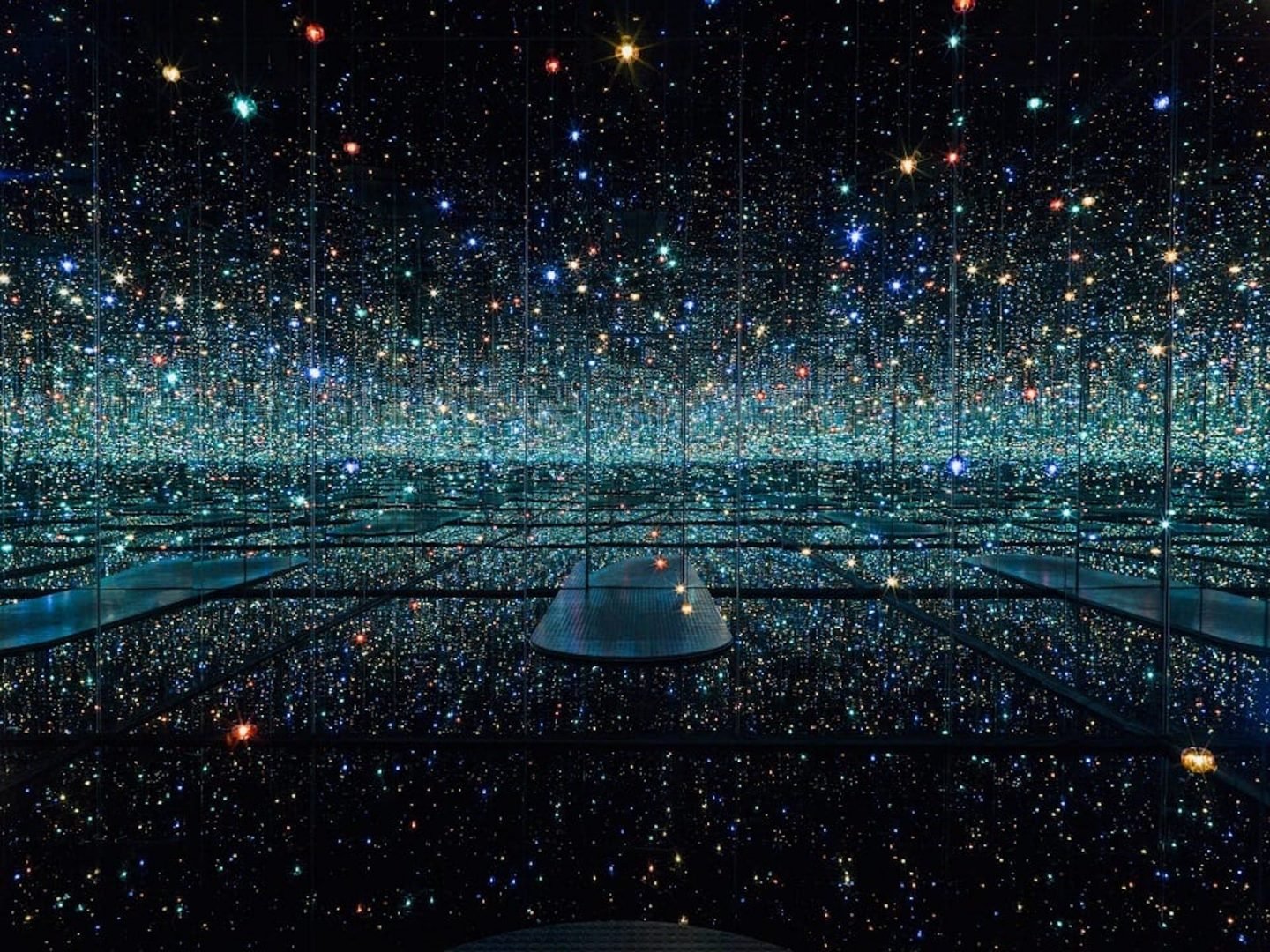
Gleaming Lights of the Souls, Yayoi Kusama, 2008. Courtesy of Yayoi Kusama and David Zwimmer Studio
Kusama is best known for her repetitive artworks and almost psychedelic installations involving a recurring vocabulary of forms, like polka dots that are often rendered onto boldly colored backdrops—where every available surface is overtaken by the same pattern. Speaking to Christian Lund in an interview with the Louisiana in 2011, Kusama explains that her family were strongly against her becoming an artist, and in fact, kicked her out of home for it. Consequently, she moved to New York for almost two decades, where her career flourished as one of the most important contemporary artists of our time. The development of Kusama’s extraordinary creative output is said to have its origins in her escapism from both her family experience and her struggles with her mental health. Since 1977, Kusama has chosen to live at a residency in a hospital for the mentally unwell in Tokyo. Each day, she works in her studio nearby.
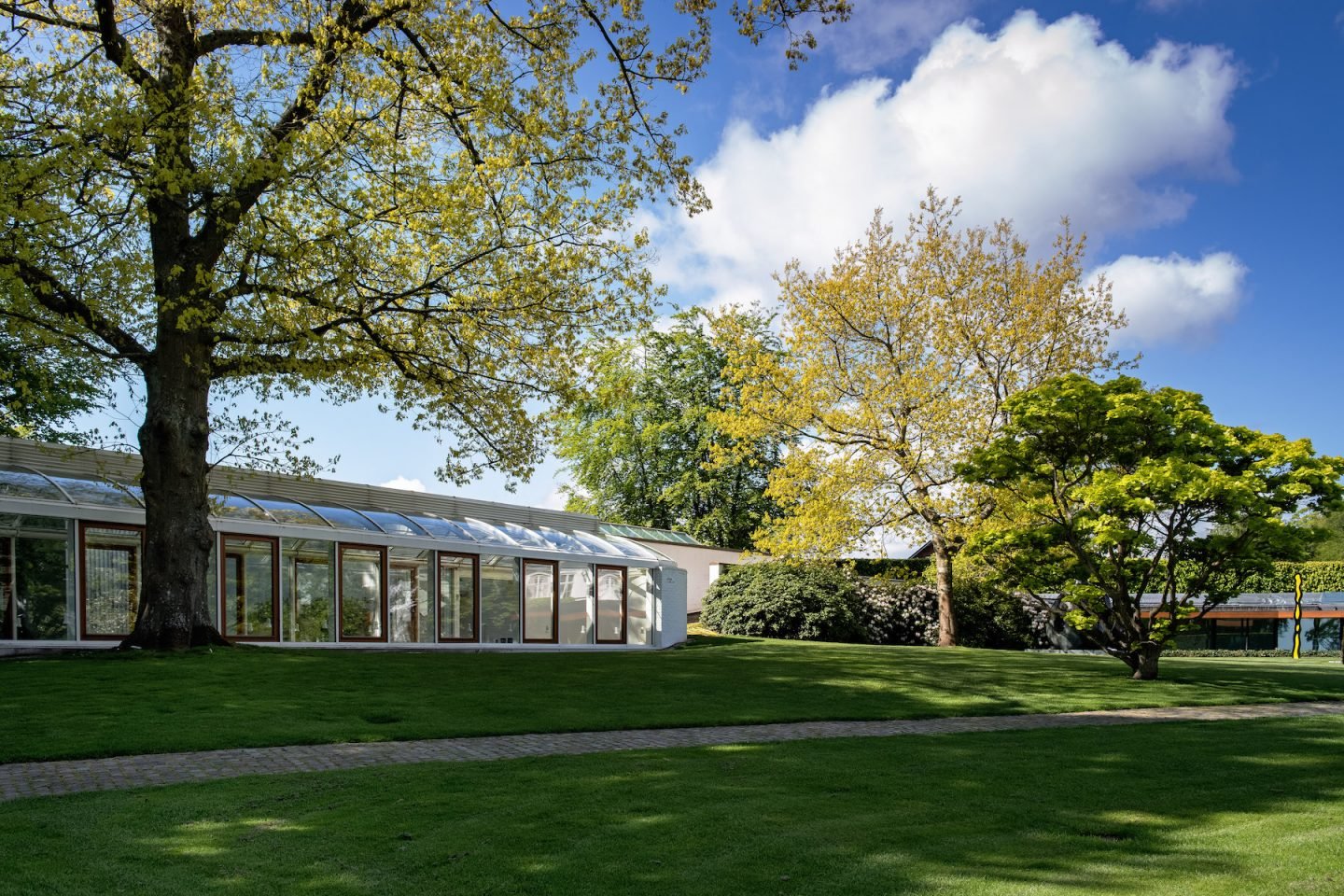
Louisiana Sculpture Park, Upper Lawn and Break Room. Photo: Kim Hansen. Credit: Louisiana Museum of Modern Art
“Creating Mirror Room was a huge gamble for me,” she explains. “By using lights, their reflection, and so on, I wanted to show their cosmic image beyond the world where we live. They are mysterious and amazing; it gives us the sense of infinite existence,” she says. I am not sure if it is a suggestion from my illness… [but] when I am creating my work, everything disappears around me.”
With the creation of her absorbing works, we are privy to glimpses of her incredible vision, and are reminded of the power of imagination and self-expression. Such things help us to make sense of the world, and help us to find new ways of seeing and living. “We were born on earth: after all, the moon is a polka-dot, the sun is a polka-dot, and where we live is a polka-dot,” she says. “You can find them in the form of the eternally mysterious cosmos, too. Through the [dots], I wanted to see a philosophy of life.”
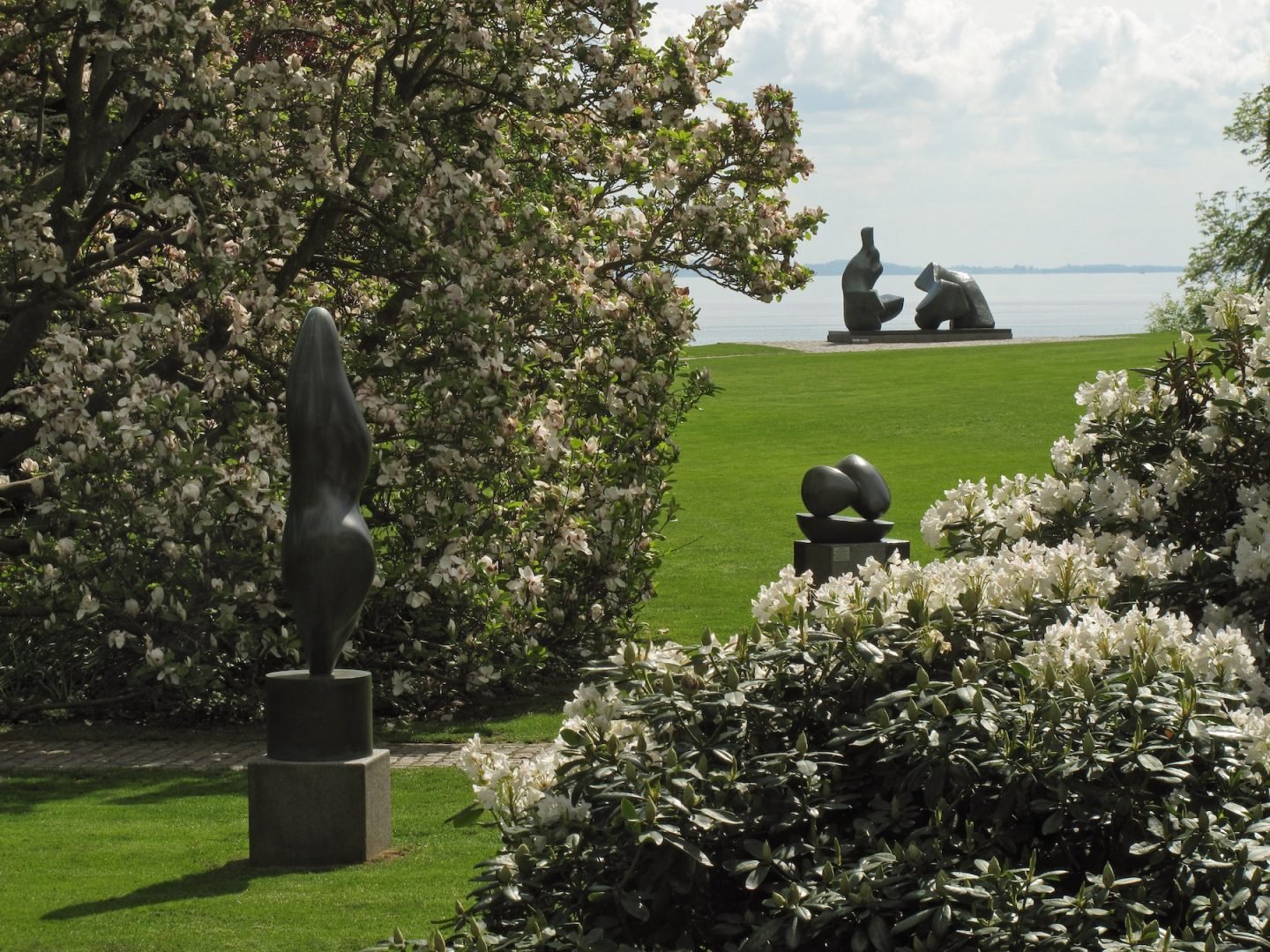
Rhododendron og Magnolie med Jean Arp "Vénus de Meudon" og "Concretion humaine sur coupe ovale" samt Henry Moore "Two Piece Reclining Figure No. 5"
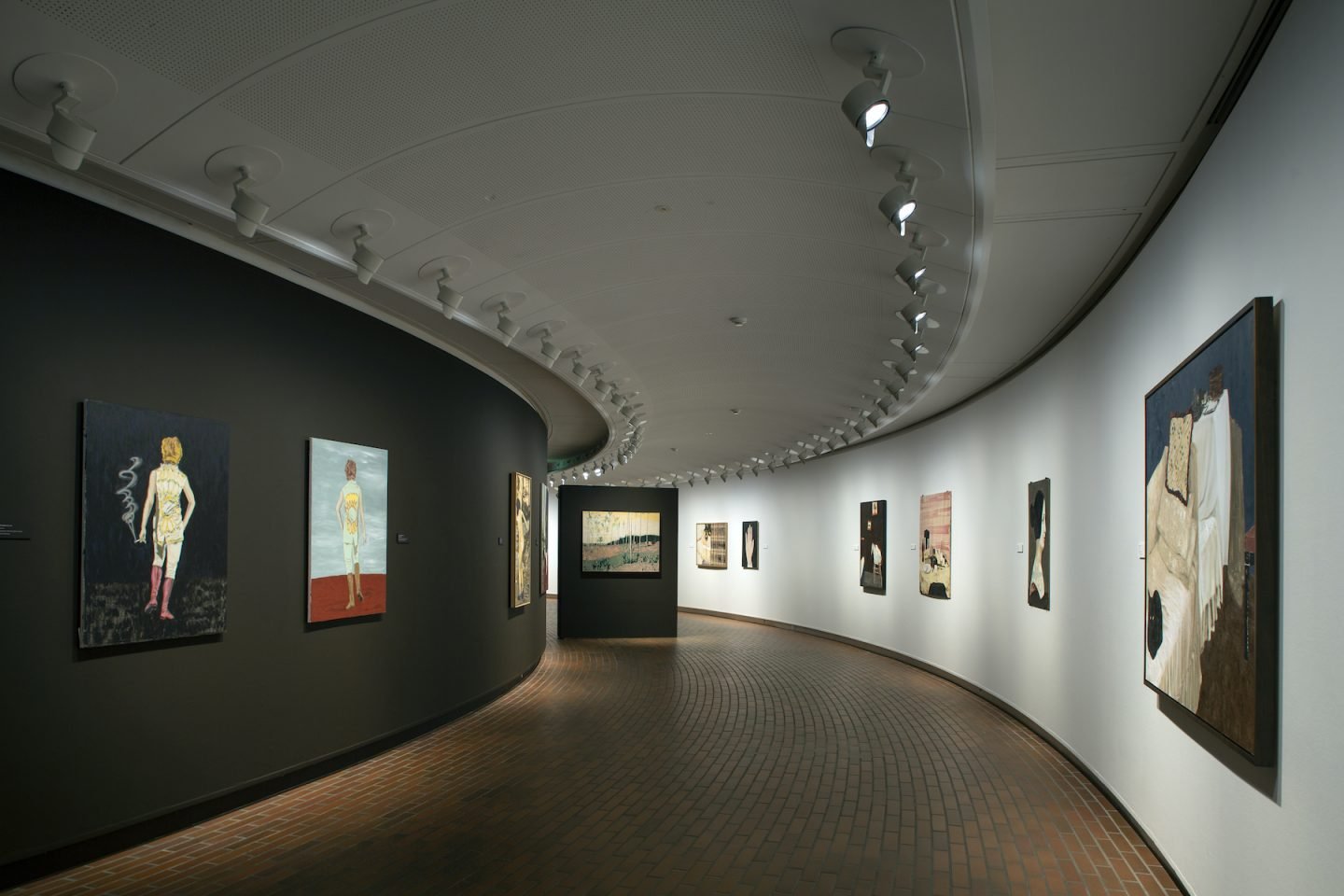
Mamma Andersson - Humdrum Days. Installation view. Photo: Poul Buchard / Brøndum & Co.
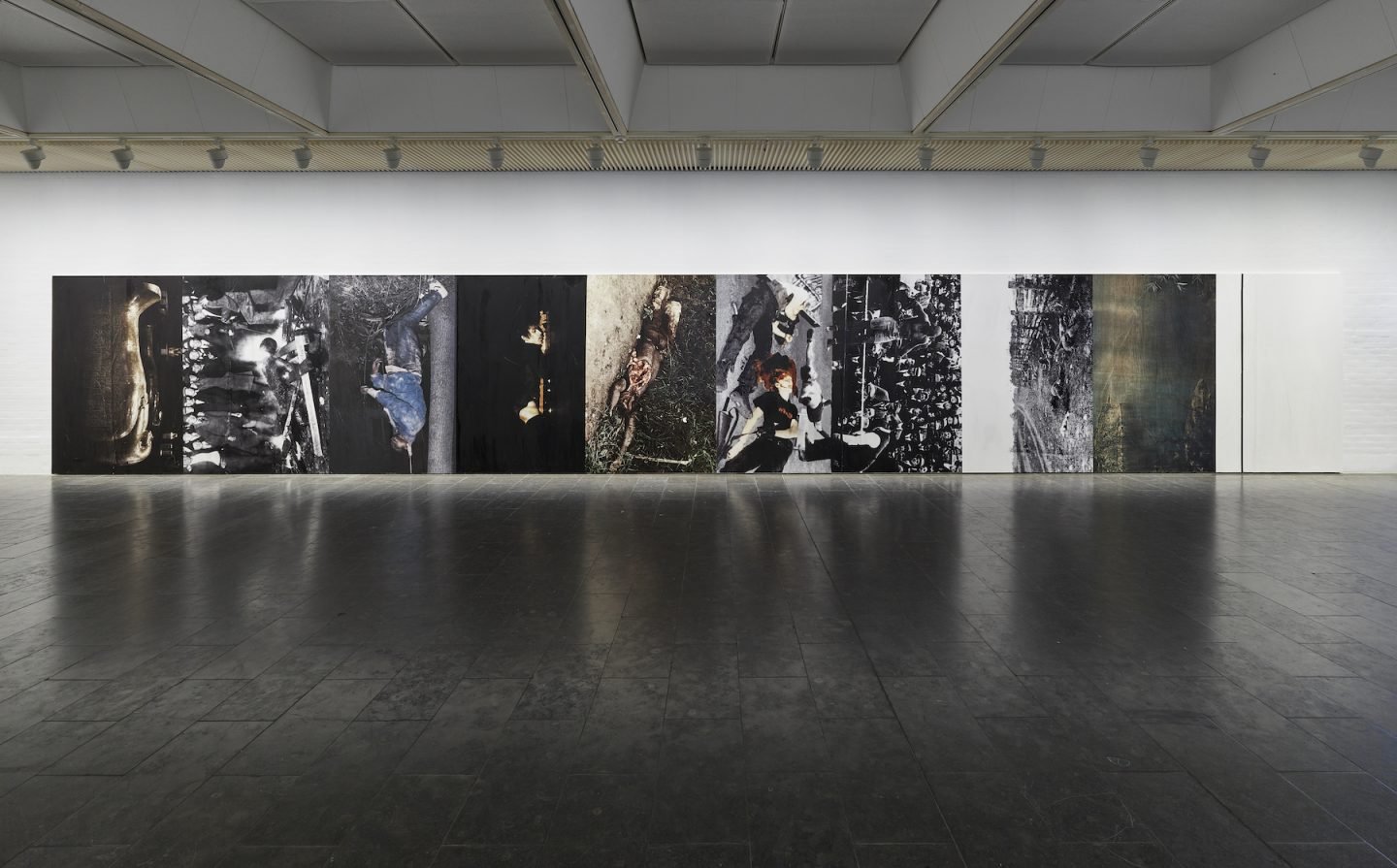
Arthur Jafa - MAGNUMB. Photo: Anders Sune Berg. Louisiana Museum of Modern Art
ADDRESS
Louisiana Museum of Modern Art
Gl Strandvej 13, 3050
Humlebæk, Denmark
OPENING HOURS
Tue – Fri 11:00 – 22:00
Sat – Sun 11:00 – 18:00
CONTACT
Tel: +45 49190719
Website
All images © Louisiana Museum of Modern Art
